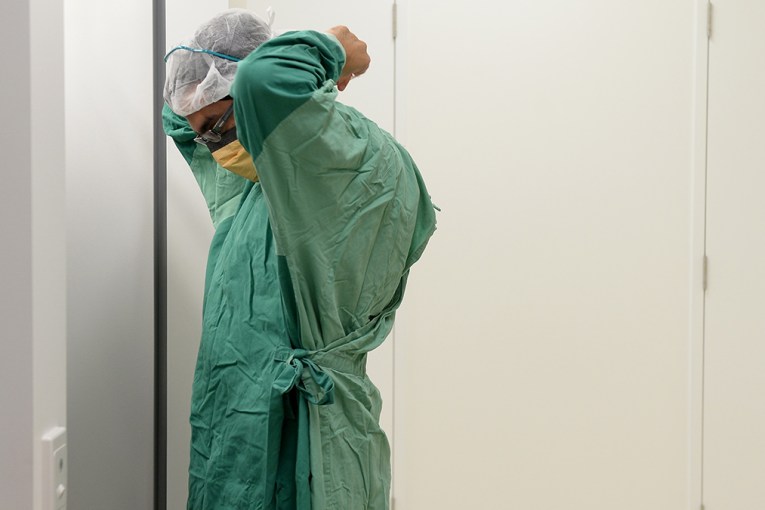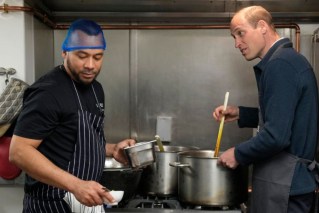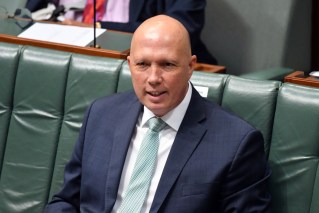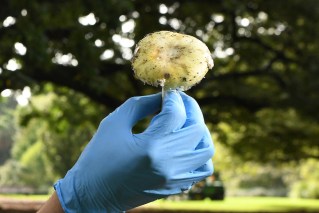‘COVID, COVID, COVID’: In Trump’s final chapter, a failure to rise to the moment
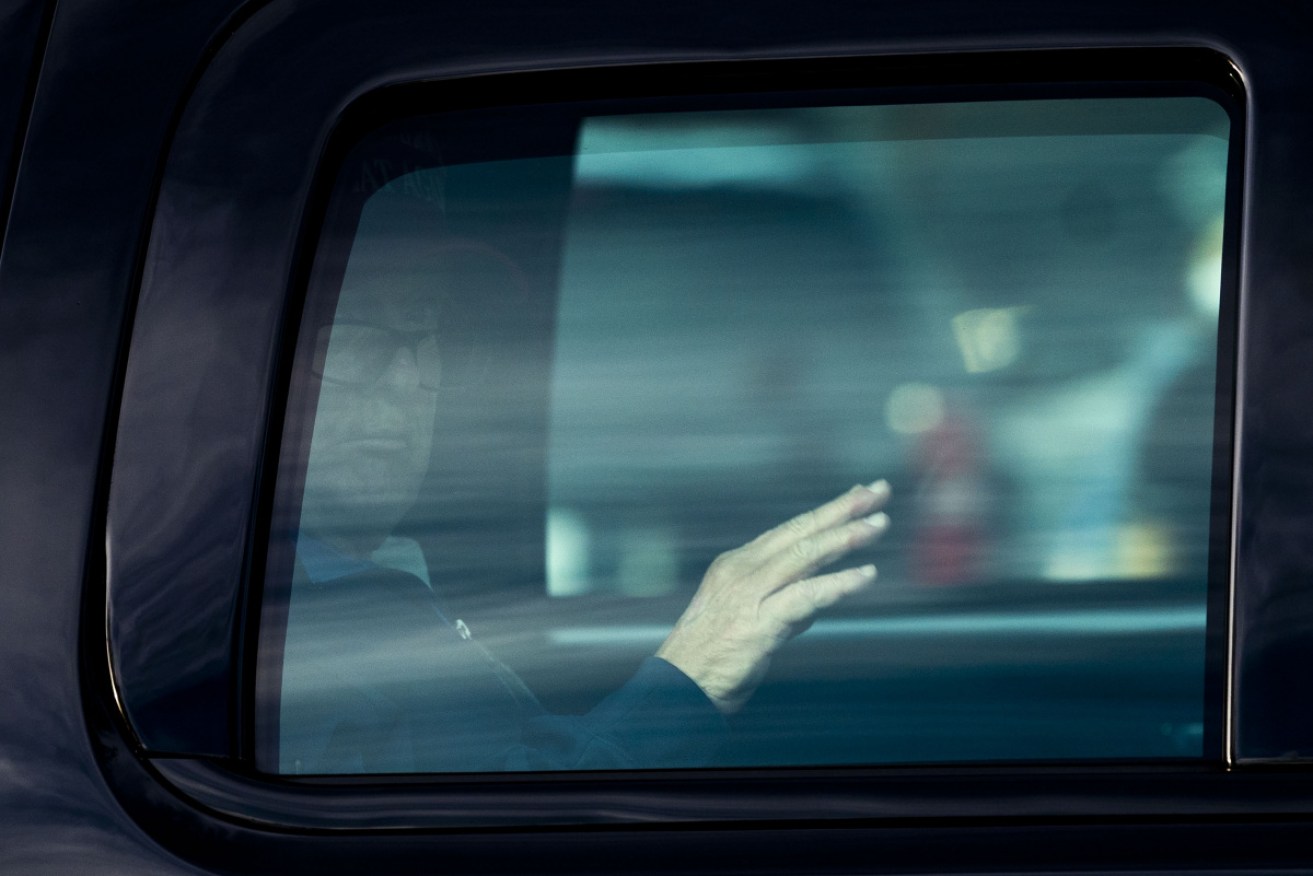
President Trump not only ended up soundly defeated by Joseph R. Biden Jr., but missed his chance to show that he could meet the defining challenge of his tenure. Photo: NYT
It was a warm summer Wednesday, Election Day was looming and President Donald Trump was even angrier than usual at the relentless focus on the coronavirus pandemic.
“You’re killing me! This whole thing is! We’ve got all the damn cases,” Mr Trump yelled at Jared Kushner, his son-in-law and senior adviser, during a gathering of top aides in the Oval Office on August 19. “I want to do what Mexico does. They don’t give you a test till you get to the emergency room and you’re vomiting.”
Mexico’s record in fighting the virus was hardly one for the United States to emulate. But the president had long seen testing not as a vital way to track and contain the pandemic but as a mechanism for making him look bad by driving up the number of known cases.
And on that day he was especially furious after being informed by Dr Francis S. Collins, the head of the National Institutes of Health, that it would be days before the government could give emergency approval to the use of convalescent plasma as a treatment, something Mr Trump was eager to promote as a personal victory going into the Republican National Convention the following week.
“They’re Democrats! They’re against me!” he said, convinced that the government’s top doctors and scientists were conspiring to undermine him.
“They want to wait!”
Throughout late summer and fall, in the heat of a reelection campaign that he would go on to lose, and in the face of mounting evidence of a surge in infections and deaths far worse than in the spring, Trump’s management of the crisis – unsteady, unscientific and coloured by politics all year – was in effect reduced to a single question: What would it mean for him?

The president has long seen testing not as a vital way to track and contain the pandemic but as a mechanism for making him look bad by driving up the number of known cases. Photo: NYT
The result, according to interviews with more than two dozen current and former administration officials and others in contact with the White House, was a lose-lose situation. Trump not only ended up soundly defeated by Joe Biden, but missed his chance to show that he could rise to the moment in the final chapter of his presidency and meet the defining challenge of his tenure.
Efforts by his aides to persuade him to promote mask wearing, among the simplest and most effective ways to curb the spread of the disease, were derailed by his conviction that his political base would rebel against anything that would smack of limiting their personal freedom. Even his own campaign’s polling data to the contrary could not sway him.
His explicit demand for a vaccine by Election Day – a push that came to a head in a contentious Oval Office meeting with top health aides in late September – became a misguided substitute for warning the nation that failure to adhere to social distancing and other mitigation efforts would contribute to a slow-rolling disaster this winter.
His concern? That the man he called “Sleepy Joe” Biden, who was leading him in the polls, would get credit for a vaccine, not him.
The government’s public health experts were all but silenced by the arrival in August of Dr Scott W Atlas, the Stanford professor of neuroradiology recruited after appearances on Fox News.
Watching @FoxNews is almost as bad as watching Fake News @CNN. New alternatives are developing!
— Donald J. Trump (@realDonaldTrump) December 30, 2020
With Dr Deborah L. Birx, the coordinator of the White House virus task force, losing influence and often on the road, Atlas became the sole doctor Mr Trump listened to. His theories, some of which scientists viewed as bordering on the crackpot, were exactly what the president wanted to hear: The virus is overblown, the number of deaths are exaggerated, testing is overrated, lockdowns do more harm than good.
As the gap between politics and science grew, the infighting that Mr Trump had allowed to plague the administration’s response from the beginning only intensified. Threats of firings worsened the leadership vacuum as key figures undercut each other and distanced themselves from responsibility.
The administration had some positive stories to tell. Mr Trump’s vaccine development program, Operation Warp Speed, had helped drive the pharmaceutical industry’s remarkably fast progress in developing several promising approaches. By the end of the year, two highly effective vaccines would be approved for emergency use, providing hope for 2021.
The White House rejected any suggestions that the president’s response had fallen short, saying he had worked to provide adequate testing, protective equipment and hospital capacity and that the vaccine development program had succeeded in record time.

Supporters of Mr. Trump outside Walter Reed National Military Medical Center, where he was treated for the coronavirus, in October. He largely rejected aides’ efforts to use his bout with the illness to demonstrate a new compassion. Photo: NYT
“President Trump has led the largest mobilization of the public and private sectors since WWII to defeat COVID-19 and save lives,” said Brian Morgenstern, a White House spokesperson.
But Mr Trump’s unwillingness to put aside his political self-centeredness as Americans died by the thousands each day or to embrace the steps necessary to deal with the crisis remains confounding even to some administration officials. “Making masks a culture war issue was the dumbest thing imaginable,” one former senior adviser said.
His own bout with COVID-19 in early October left him extremely ill and dependent on care and drugs not available to most Americans, including a still-experimental monoclonal antibody treatment, and he saw firsthand how the disease coursed through the White House and some of his close allies.
Yet his instinct was to treat that experience not as a learning moment or an opportunity for empathy, but as a chance to portray himself as a Superman who had vanquished the disease. His own experience to the contrary, he assured a crowd at the White House just a week after his hospitalization, “It’s going to disappear; it is disappearing.”
Weeks after his own recovery, he would still complain about the nation’s preoccupation with the pandemic.
“All you hear is COVID, COVID, COVID, COVID, COVID, COVID, COVID, COVID, COVID, COVID, COVID,” Trump said at one campaign stop, uttering the word 11 times.
In the end he could not escape it.
‘The Base Will Revolt’
By late July, new cases were at record highs, defying Mr Trump’s predictions through the spring that the virus was under control, and deaths were spiking to alarming levels. Herman Cain, a 2012 Republican presidential candidate, died from the coronavirus. The previous month he had attended a Trump rally without a mask.
With the pandemic defining the campaign despite Trump’s efforts to make it about law and order, Tony Fabrizio, the president’s main pollster, came to the Oval Office for a meeting in the middle of the summer prepared to make a surprising case: that mask wearing was acceptable even among Mr Trump’s supporters.
Arrayed in front of the Resolute Desk, Trump’s advisers listened as Mr Fabrizio presented the numbers. According to his research, some of which was reported by The Washington Post, voters believed the pandemic was bad and getting worse, they were more concerned about getting sick than about the virus’s effects on their personal financial situation, the president’s approval rating on handling the pandemic had hit new lows and a little more than half the country did not think he was taking the situation seriously.
The Federal Government has distributed the vaccines to the states. Now it is up to the states to administer. Get moving!
— Donald J. Trump (@realDonaldTrump) December 30, 2020
But what set off debate that day was Mr Fabrizio’s finding that more than 70 per cent of voters in the states being targeted by the campaign supported mandatory mask wearing in public, at least indoors, including a majority of Republicans.
Mr Kushner, who along with Hope Hicks, another top adviser, had been trying for months to convince Mr Trump that masks could be portrayed as the key to regaining freedom to go safely to a restaurant or a sporting event, called embracing mask-wearing a “no-brainer.”
Mr Kushner had some reason for optimism. Mr Trump had agreed to wear one not long before for a visit to Walter Reed National Military Medical Centre, after finding one he believed he looked good in: dark blue, with a presidential seal.

The president removed his mask upon arriving at the White House on Oct. 5, after being hospitalised with COVID-19. He was rarely seen wearing one again. Photo: NYT
But Mark Meadows, the White House chief of staff – backed up by other aides including Stephen Miller – said the politics for Mr Trump would be devastating.
“The base will revolt,” Mr Meadows said, adding that he was not sure Mr Trump could legally make it happen in any case.
That was all Mr Trump needed to hear. “I’m not doing a mask mandate,” he concluded.
https://twitter.com/jlb8r/status/1344431590160687104
Mr Trump never came around to the idea that he had a responsibility to be a role model, much less that his leadership role might require him to publicly acknowledge hard truths about the virus – or even to stop insisting that the issue was not a rampaging pandemic but too much testing.
Alex Azar, the health and human services secretary, briefed the president this fall on a Japanese study documenting the effectiveness of face masks, telling him: “We have the proof. They work.”
But the president resisted, criticising Mr Kushner for pushing them and again blaming too much testing – an area Mr Kushner had been helping to oversee – for his problems.
“I’m going to lose,” Mr Trump told Mr Kushner during debate preparations.
“And it’s going to be your fault, because of the testing.”
Mr Morgenstern, the White House spokesperson, said that exchange between the president and Mr Kushner “never happened.”
Mr Azar, who was sometimes one of the few people wearing a mask at White House events, privately bemoaned what he called a political, anti-mask culture set by Mr Trump. At White House Christmas parties, Mr Azar asked maskless guests to back away from him.
Divisions and disagreements
The decision to run the government’s response out of the West Wing was made in the early days of the pandemic. The idea was to break down barriers between disparate agencies, assemble public health expertise and encourage quick and coordinated decision-making.
It did not work out like that, and by fall the consequences were clear.
Mr Trump had always tolerated if not encouraged clashes among subordinates, a tendency that in this case led only to policy paralysis, confusion about who was in charge and a lack of a clear, consistent message about how to reduce the risks from the pandemic.
Keeping decision-making power close to him was another Mr Trump trait, but in this case it also elevated the myriad choices facing the administration to the presidential level, bogging the process down in infighting, raising the political stakes and encouraging aides to jockey for favour with Mr Trump.
The result at times was a systemwide failure that extended well beyond the president.
“What we needed was a coordinated response that involved contributions from multiple agencies,” said Dr Scott Gottlieb, who was commissioner of the Food and Drug Administration for the first two years of the Trump administration.

Dr. Stephen M. Hahn, center, the commissioner of the Food and Drug Administration, Dr. Deborah L. Birx, the coordinator of the White House virus task force, and Alex M. Azar II, the secretary of health and human services, in the Oval Office in May. Conflicts on the president’s team only intensified as the year went on. Photo: NYT
“Someone needed to pull that all together early,” he said.
“It wasn’t the job of the White House, either. This needed to happen closer to the agencies. That didn’t happen on testing, or on a whole lot of other things.”
The relationship between Mr Azar and Dr Stephen M. Hahn, the commissioner of the Food and Drug Administration, grew increasingly tense; by early November, they were communicating only by text and in meetings.
Dr Birx had lost the clout she enjoyed early on in the crisis and spent much of the summer and fall on the road counselling governors and state health officials.
Mr Meadows was at odds with almost everyone as he sought to impose the president’s will on scientists and public health professionals. In conversations with top health officials, Mr Meadows would rail against regulatory “bureaucrats” he thought were more interested in process than outcome.
Some of the doctors on the task force, including Dr Anthony Fauci and Dr Robert R. Redfield, were reluctant to show up in person at the White House, worried that the disdain there for mask wearing and social distancing would leave them at risk of infection.

Dr. Scott W. Atlas, the Stanford professor of neuroradiology recruited after appearances on Fox News, became the sole doctor Mr Trump listened to. Photo: NYT
Vice President Mike Pence was nominally in charge of the task force but was so cautious about getting crosswise with Mr Trump as they battled for reelection that, in public at least, he became nearly invisible.
The debates inside the White House increasingly revolved around Atlas, who had no formal training in infectious diseases but whose views – which Mr Trump saw him deliver on Fox News – appealed to the president’s belief that the crisis was overblown.
Health officials often had a hard time finding an audience in the upper reaches of the West Wing. In a mid-November task force meeting, they issued a dire warning to Mr Meadows about the looming surge in cases set to devastate the country. Mr Meadows demanded data to back up their claim.
One outcome of the meeting was a November 19 news conference on the virus’s dire threat, the first in many weeks. But while Mr Pence, who led the briefing, often urged Americans to “do their part” to slow the spread of the virus, he never directly challenged Mr Trump’s hesitancy on masks and social distancing.
At the briefing, he said that “decision-making at the local level” was key, continuing a long pattern of the administration seeking to push responsibility to the states.
Mr Azar had been cut out of key decision-making as early as February when Mr Pence took over the task force.
Mr Azar would complain to his associates that Pence’s staff and task force members went around him to issue orders to his subordinates.
On tenterhooks about his job status, Mr Azar found an opening that offered a kind of redemption, steering his attention through the summer and fall to Operation Warp Speed, the government’s effort to support rapid development of a vaccine, lavishing praise on Mr Trump and crediting him for nearly every advance.
Behind the scenes, Mr Azar portrayed Mr Hahn to the White House as a flailing manager – a complaint he also voiced about Redfield. In late September, he told the White House he was willing to fire Mr Hahn, according to officials familiar with the offer.
-NYT
